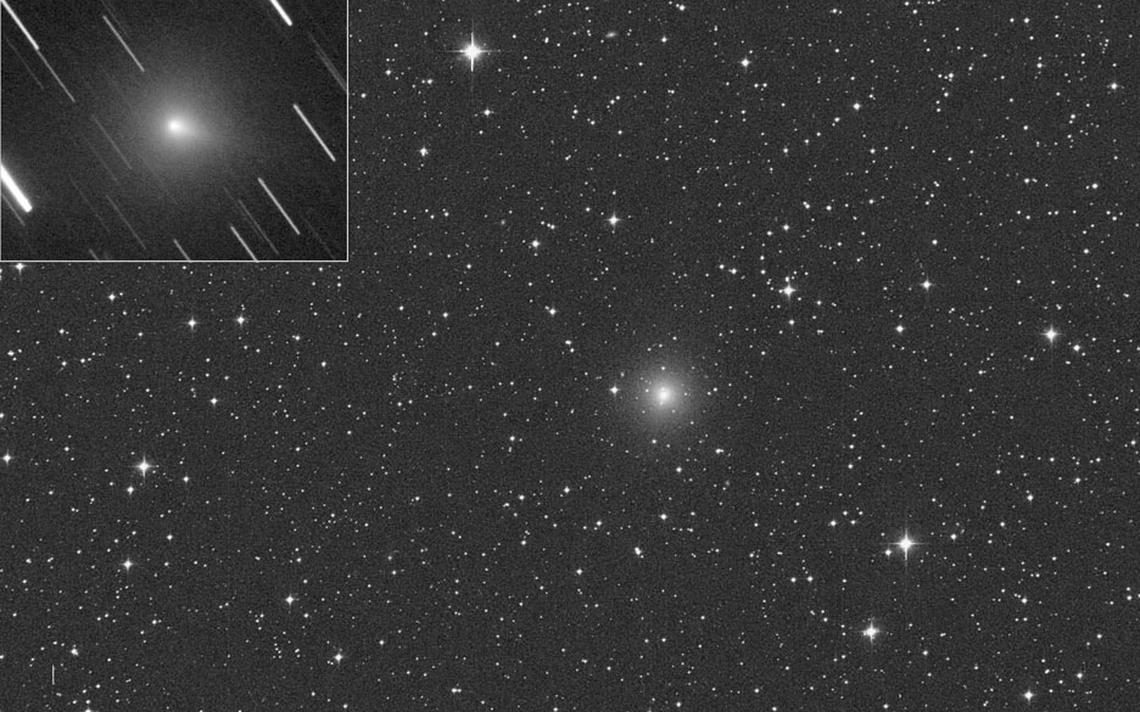
© Michael Jäger (main) and Gianluca MasiComet ATLAS looked like a misty ball of light with a brighter core (nucleus) on March 11. Hints of a tail are visible in both photos.
at the time and looked like a small wad of glowing fuzz from a dark sky site. Wirtanen
never developed a bright tail, one of the most distinguishing and beautiful aspects of a comet. Since then plenty of comets have passed by, but only a few have been visible in binoculars and most have required a telescope.
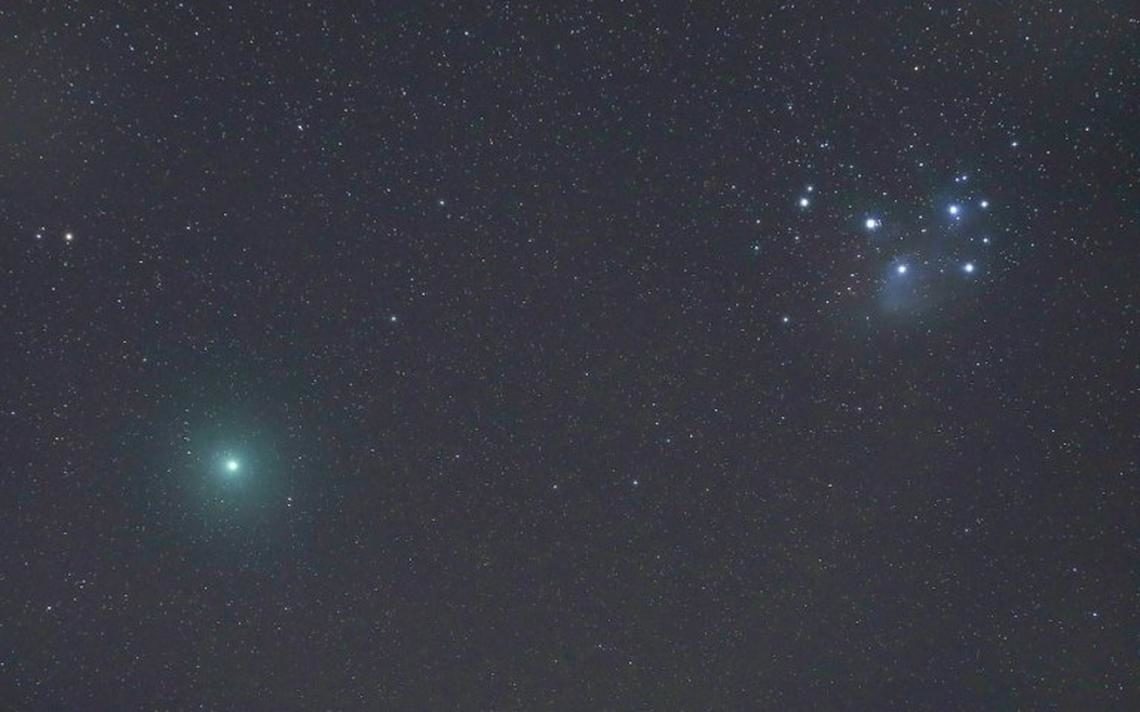
© Bob KingComet 46P/Wirtanen and the Pleiades star cluster make a gorgeous pair on Dec. 16, 2018. Recently discovered comet C/2019 Y4 (ATLAS) may become equally bright or brighter in northern skies this spring.
I have hopeful news.
On Dec. 28, 2019, astronomers with the Asteroid Terrestrial-impact Last Alert System (ATLAS) survey discovered a faint comet named C/2019 Y4 ATLAS. Back in mid-late February I glimpsed it my 15-inch telescope as a dim, hazy patch of light at the edge of visibility in the bowl of the Big Dipper.
A couple weeks later it had brightened to magnitude 11 — still dim but much easier to see than in
February. Now in mid-March, skywatchers with big binoculars have spotted it at around 9th magnitude! That's a remarkable uptick in so short a time.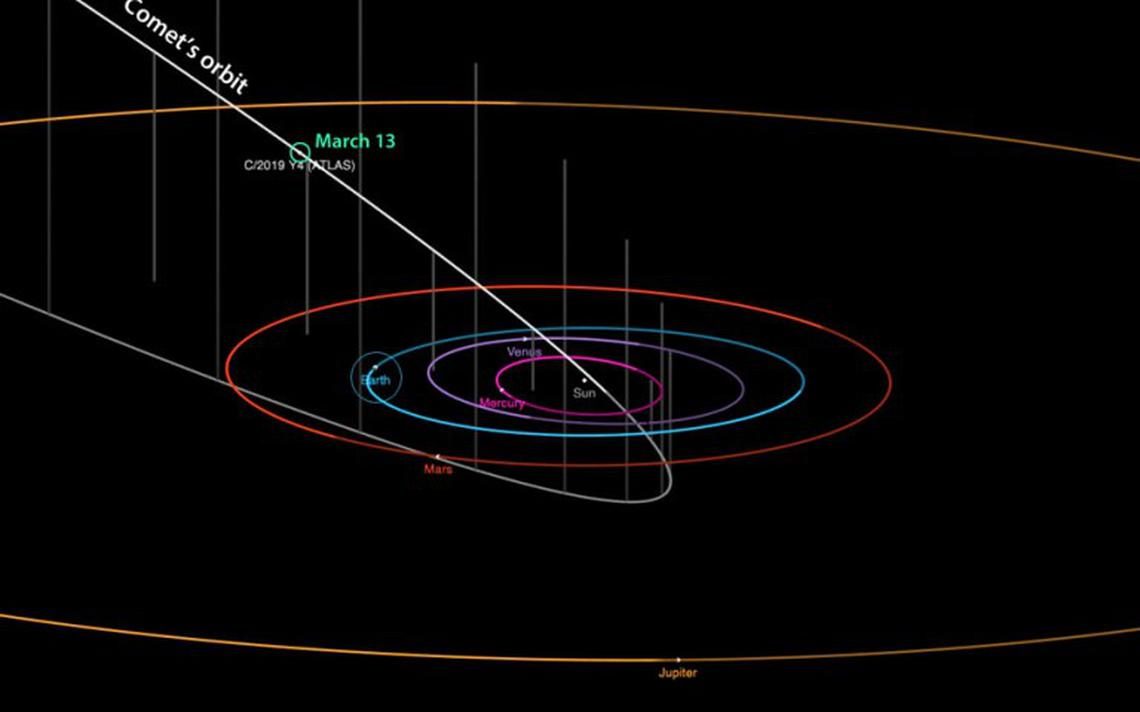
© NASAComet ATLAS's orbit is tilted 45° with respect to the plane of the planets the reason it dips in at an angle. I marked where it is today (March 13). Closest approach to the sun, called perihelion, occurs on May 31. The comet comes closest to Earth on May 23 at 72.5 million miles (116.7 million km) NASA
There is optimism.
ATLAS follows along the same orbit as the Great Comet of 1844 (C/1844 Y1) and appears to be a fragment of it. C/1844 Y1 became a fine 2nd magnitude object with a 10° tail in January 1845. Because of its rapidly increasing brightness hopes are high, but if you've had any experience with comets before you know they're little devils. Some live up to predictions, some exceed them and others flop.
Comets are prone to "outbursts" and fragmentation which can produce lots of fresh dust and ice,
causing them to brighten temporarily. Other times, those pieces quickly go poof and the comet suddenly fades.
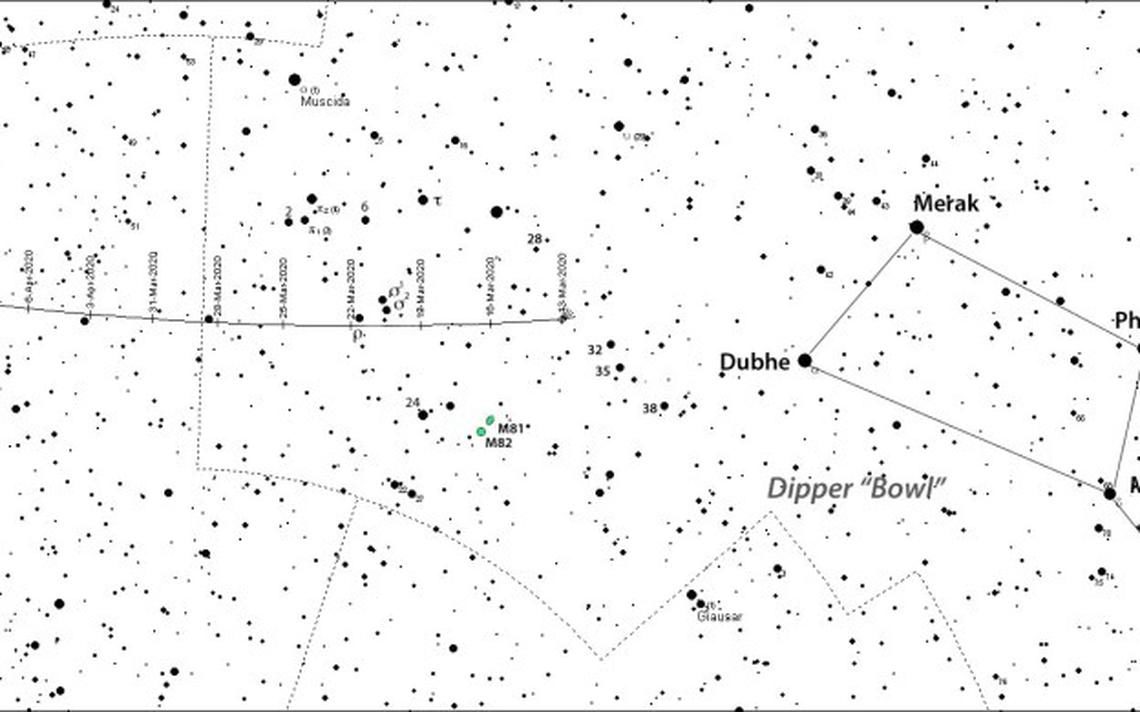
© SkyMap (Chris Marriott) with additions by the authorComet C/2019 Y4 ATLAS is shown every 3-days at 9 p.m. CDT along a track west of the Dipper Bowl from March 13 through April 12. Stars are plotted to magnitude 8.5 and labeled with their numbers and Greek letters. Click to enlarge and print out a high resolution copy to use at the telescope. The comet will look like a soft, gray fuzzy glow.
For the moment
it appears the comet could reach 2nd magnitude by mid-May when it will be visible during evening twilight low in the northwestern sky in the constellation Perseus. Its northerly location in the sky at that time will mean that
observers in the northern U.S. will have the best views. If the comet is especially dusty, viewing circumstances are such that we would see an attractive tail instead of a simple fuzzball. Be hopeful but as always, temper your expectations.
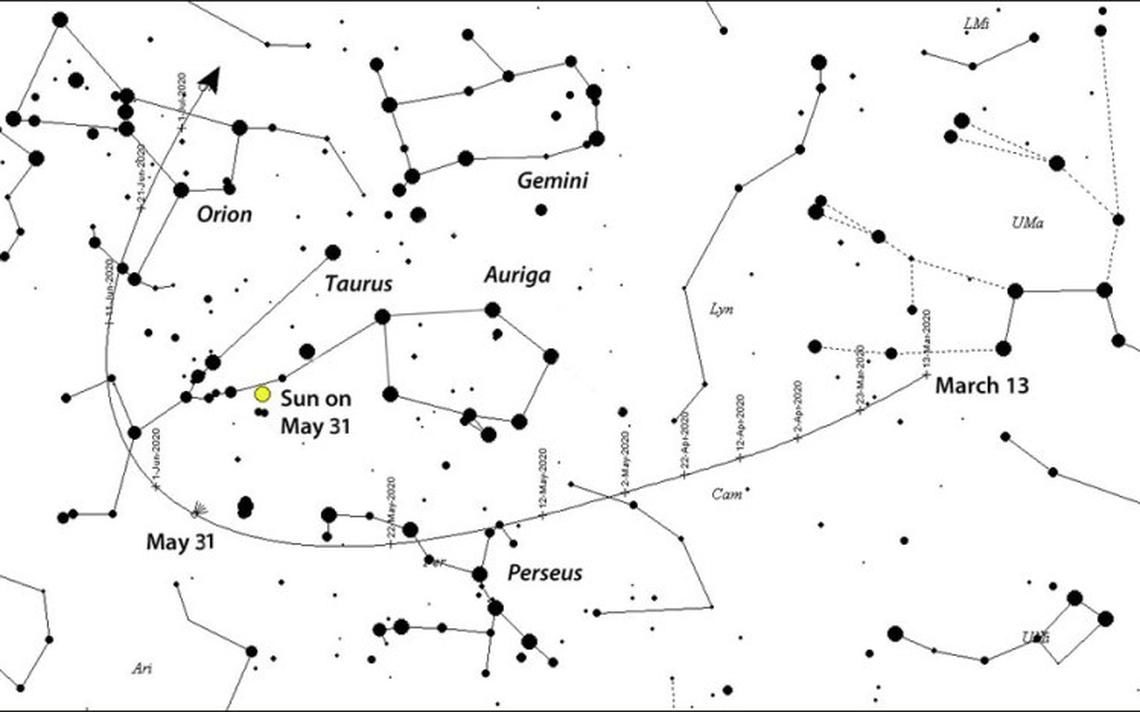
© SkyMapThe path of Comet ATLAS from March 13 through mid-July. The sun’s position is shown for May 31, the date of perihelion when the comet passes closest to the sun. SkyMap
ATLAS will be very low in the eastern sky at the time and glow between 3rd and 5th magnitude.
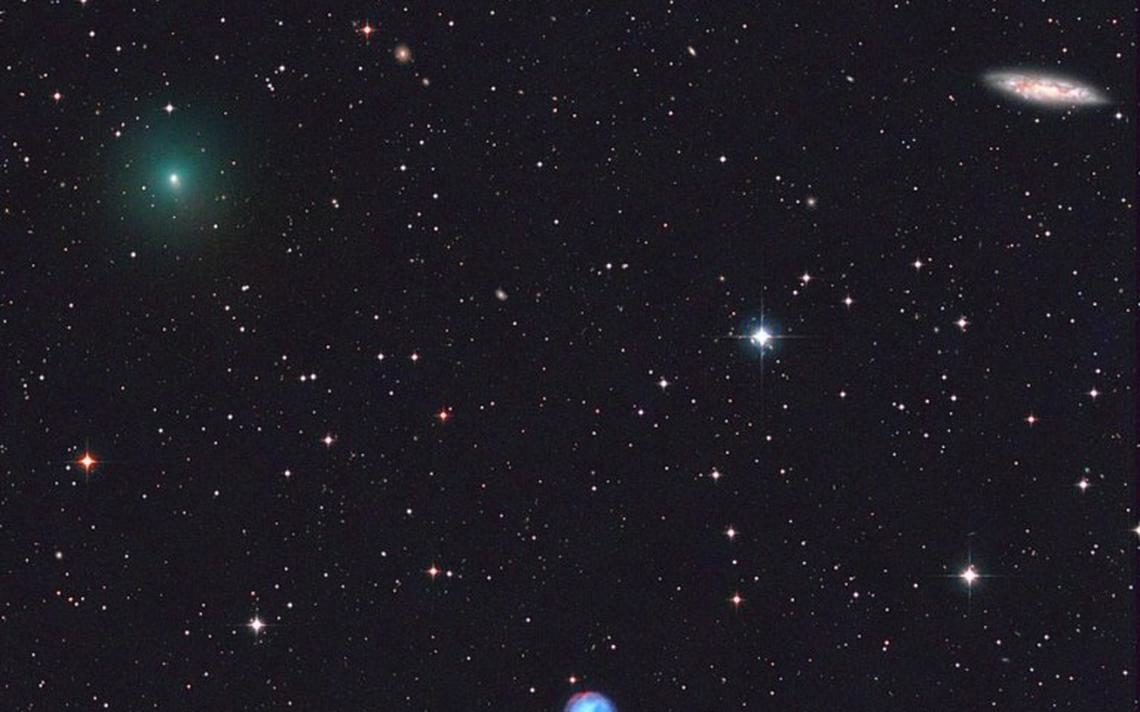
© Michael JägerThe comet joins the Owl Nebula (bottom) and the galaxy M108 on Feb. 24, 2019.
Right now, you're best off looking with a 6-inch telescope from a dark sky. I've provided a map that shows its track across Ursa Major near the Bowl of the Big Dipper. If ATLAS continues to brighten apace it will soon be visible in binoculars. When that happens I promise to return with more news, observations and photos!










So far as I've seen in this life,(e.g., Halley's, plus whatever other supposed naked-eye comets), have been duds.
RC
*I hope. After all, visible comets have always been taken as an ** - a cosmic warning of impending disaster.)
*I'm blanking on the word. Supernatural warning; an "Ar..."